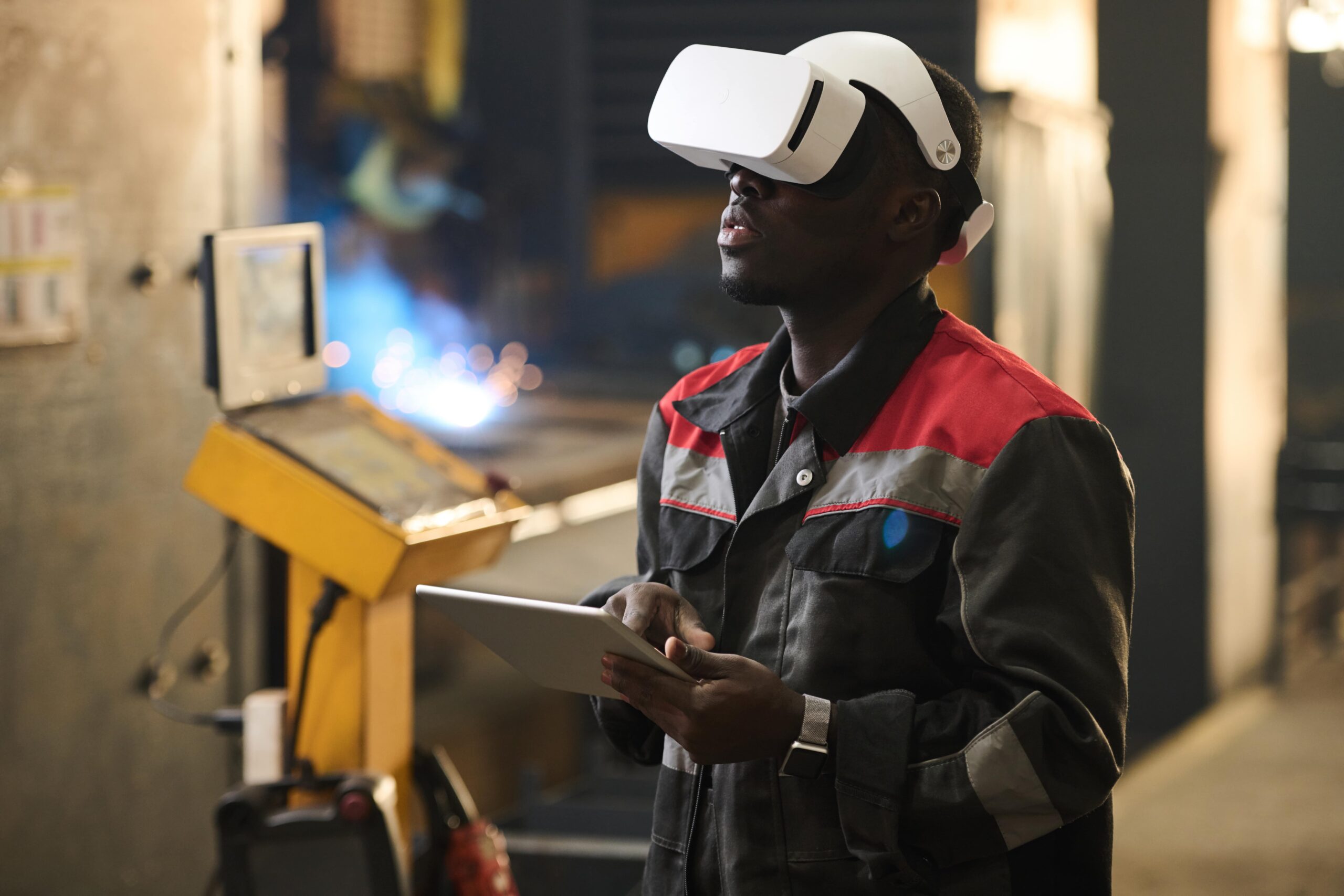The Future of Wearable Technology: Beyond Smartwatches
Wearable technology has advanced rapidly, with smartwatches leading the way. However, the future promises even more innovative and diverse applications.
This article explores the emerging trends and potential of wearable technology, highlighting its impact on various sectors and envisioning a world where wearable tech integrates seamlessly into our daily lives.
Expanding the Horizons of Health Monitoring

Advanced Biometrics
Health monitoring remains a significant focus of wearable technology. Beyond tracking steps and heart rates, future devices will offer advanced biometric capabilities.
Wearables will monitor glucose levels, hydration status, and even blood pressure continuously, providing real-time health insights.
These advancements will be particularly beneficial for managing chronic conditions like diabetes and hypertension.
Wearables such as continuous glucose monitors (CGMs) are already transforming diabetes management by offering non-invasive, real-time monitoring. Companies like Dexcom and Abbott are at the forefront, developing sensors that integrate with smartphones to provide instant alerts and comprehensive data analysis.
These technologies will evolve to become more accurate, user-friendly, and affordable, making them accessible to a broader population.
Predictive Health Analytics
The integration of artificial intelligence (AI) with wearable technology will revolutionize health monitoring. AI algorithms can analyze vast amounts of data collected by wearables, identifying patterns and predicting potential health issues before they become critical.
For instance, early signs of atrial fibrillation, a precursor to stroke, can be detected through AI-driven analysis of heart rate data.
This predictive capability will enable proactive healthcare, allowing individuals and healthcare providers to take preventive measures. Wearable devices will become essential tools in personalized medicine, tailoring health recommendations based on individual data.
This shift from reactive to proactive healthcare will improve outcomes and reduce healthcare costs significantly.
Enhancing Fitness and Performance
Personalized Training Programs
Wearable technology is set to transform fitness and athletic performance by providing personalized training programs. Devices will analyze users' biometrics, fitness levels, and goals to create customized workout plans.
This tailored approach ensures that individuals exercise efficiently and safely, maximizing their potential.
Smart clothing embedded with sensors, such as the Hexoskin smart shirt, is already making waves in the fitness industry. These garments monitor various physiological parameters, including heart rate, breathing rate, and movement.
Future iterations will offer even more detailed insights, helping athletes optimize their performance and prevent injuries.
Virtual Coaching and Augmented Reality
 The future of wearable technology includes the integration of augmented reality (AR) and virtual coaching.
The future of wearable technology includes the integration of augmented reality (AR) and virtual coaching.
Wearables equipped with AR capabilities will provide real-time feedback during workouts, guiding users with visual cues and instructions. This immersive experience will be akin to having a personal trainer present at all times.
For instance, AR-enabled smart glasses can overlay workout routines onto the user's field of view, ensuring correct form and technique.
Virtual coaching platforms will connect users with professional trainers remotely, offering personalized guidance and motivation. These advancements will democratize access to high-quality fitness training, making it available to everyone, regardless of location or budget.
Revolutionizing Workplace Productivity
Wearable Augmentation
In the workplace, wearable technology will enhance productivity and safety. Augmented reality glasses, such as Microsoft HoloLens, are already being used in various industries to provide hands-free access to information.
These devices overlay digital information onto the physical world, assisting workers in tasks like assembly, maintenance, and quality control.
Future wearables will offer even more advanced capabilities, such as real-time language translation and gesture recognition. This will facilitate seamless communication and collaboration across global teams.
Additionally, exoskeletons powered by wearable technology will assist workers in physically demanding jobs, reducing the risk of injury and increasing efficiency.
Employee Wellness Programs
Wearable technology will play a crucial role in employee wellness programs. Devices will monitor stress levels, physical activity, and sleep patterns, providing insights that help employees maintain a healthy work-life balance.
Employers can use aggregated data to design wellness initiatives tailored to their workforce's needs, fostering a healthier and more productive environment.
For example, wearables can prompt employees to take breaks, hydrate, or perform stretching exercises based on real-time data. Companies like Fitbit are already partnering with businesses to integrate wearables into corporate wellness programs.
As technology advances, these programs will become more sophisticated, offering personalized recommendations and fostering a culture of health and well-being in the workplace.
Transforming Everyday Life
Smart Textiles
The integration of technology into textiles will revolutionize everyday clothing. Smart textiles embedded with sensors and conductive fibers will offer a range of functionalities, from temperature regulation to biometric monitoring. Imagine a shirt that can adjust its thermal properties based on the weather or a jacket that monitors your heart rate during exercise.
Companies like Google and Levi's are exploring smart textiles with their Project Jacquard, which integrates touch-sensitive fibers into clothing.
These innovations will expand beyond fashion, incorporating functionalities like navigation, communication, and health monitoring into everyday wear. As smart textiles become mainstream, our clothing will become an integral part of our connected lives.
Wearable Payments and Security
Wearable technology will also transform the way we conduct transactions and ensure security. Smart rings, bracelets, and other accessories equipped with near-field communication (NFC) technology will enable seamless, contactless payments. These devices will also offer enhanced security features, such as biometric authentication, to protect against fraud and unauthorized access.
The convenience of wearable payments is already evident in products like the Apple Watch and Fitbit Pay. Future advancements will see these capabilities integrated into a wider range of accessories, making everyday transactions more convenient and secure. Additionally, wearables will play a role in personal security, offering features like panic buttons and location tracking to ensure user safety.
Conclusion
The future of wearable technology extends far beyond smartwatches, promising a new era of innovation and integration into our daily lives. From advanced health monitoring and personalized fitness programs to workplace productivity and everyday conveniences, wearables will become indispensable tools. As technology continues to evolve, the potential applications of wearable technology are limitless, paving the way for a more connected, efficient, and healthier world.
References
- Exploring Wearable Technology in Healthcare Trends
- How AI Will Transform Wearables
- Trends in Wearable Tech: How Fitness Meets Fashion Globally
- Wearable Technology in the Workplace
- Employee Wellness Programs and Wearables
- The Future of Smart Textiles
- Wearable Payments: The Next Big Thing
- Google and Levi's Project Jacquard
- How Exoskeletons Are Changing Workplaces










































